

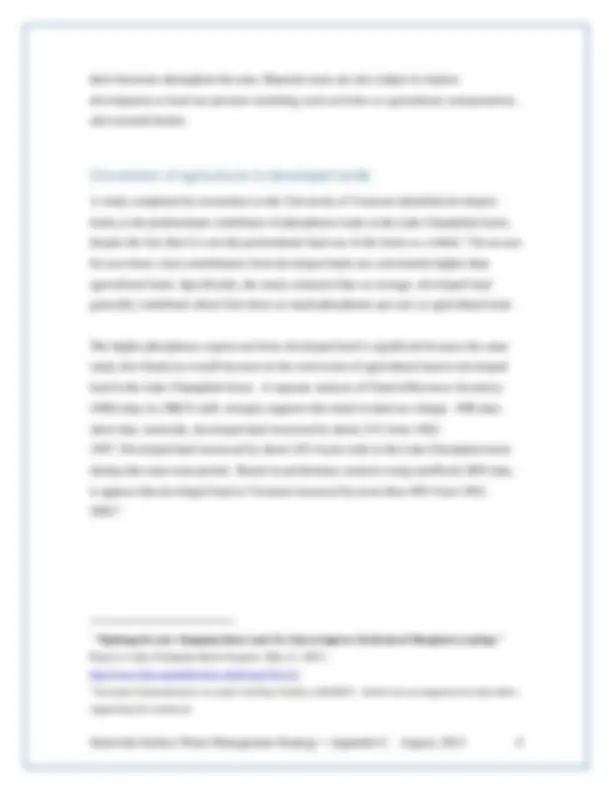
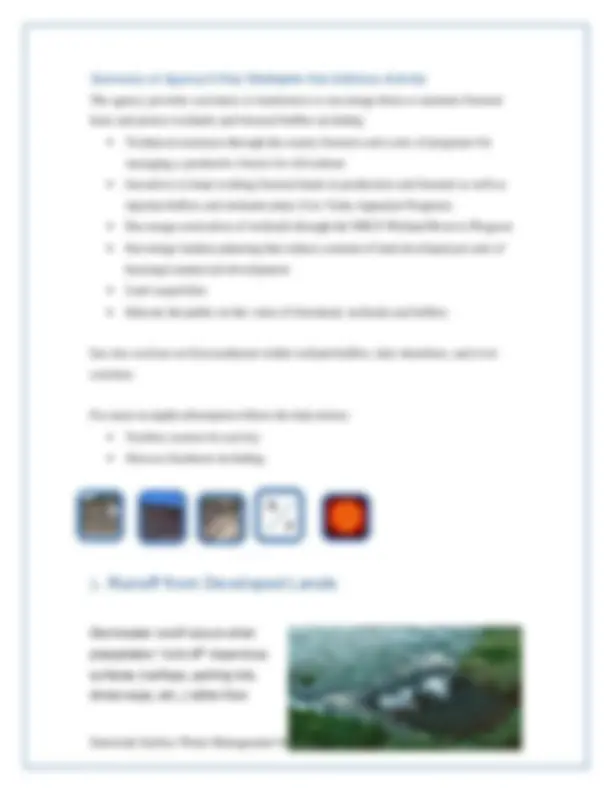
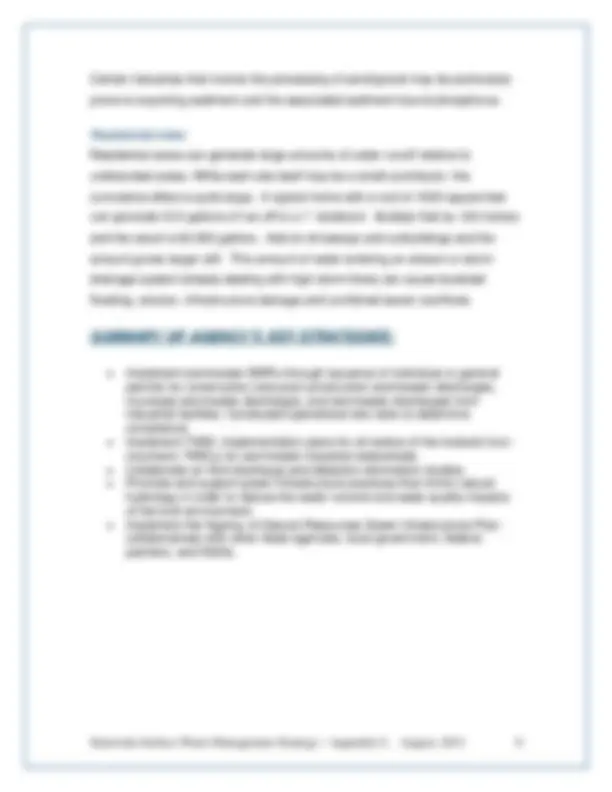
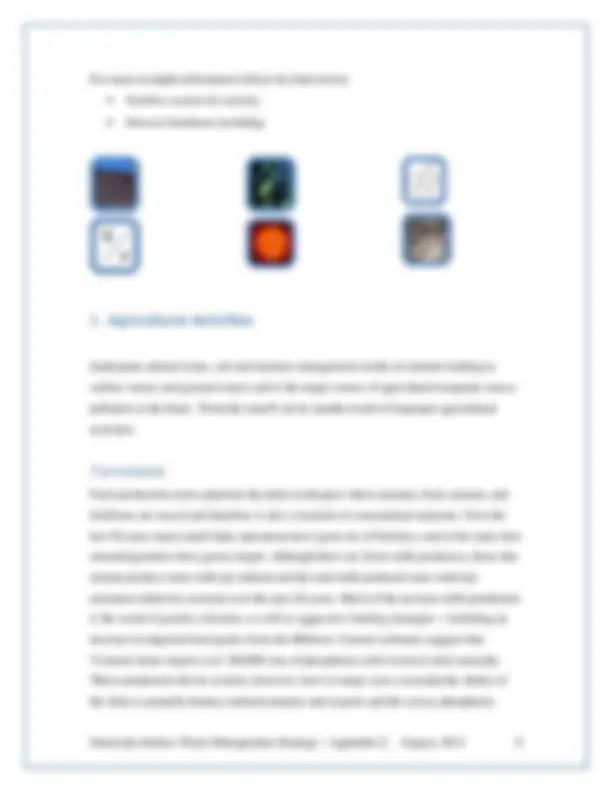
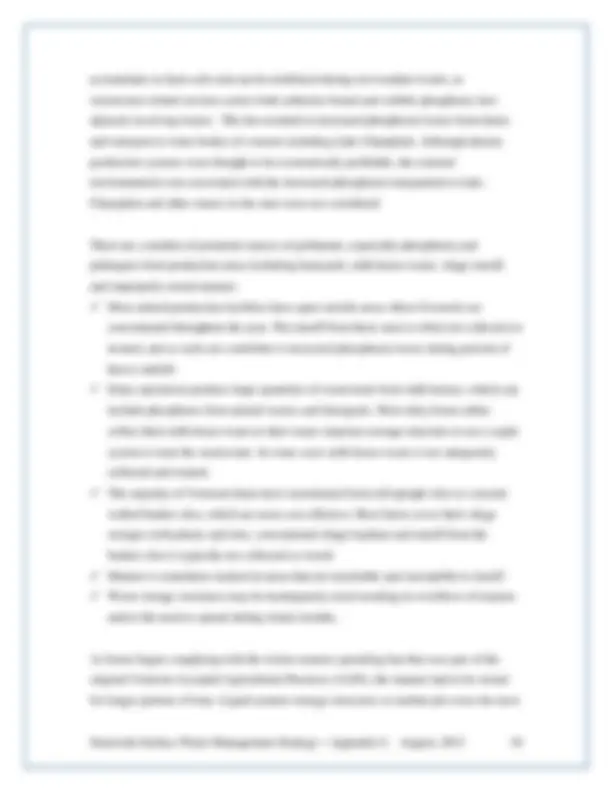
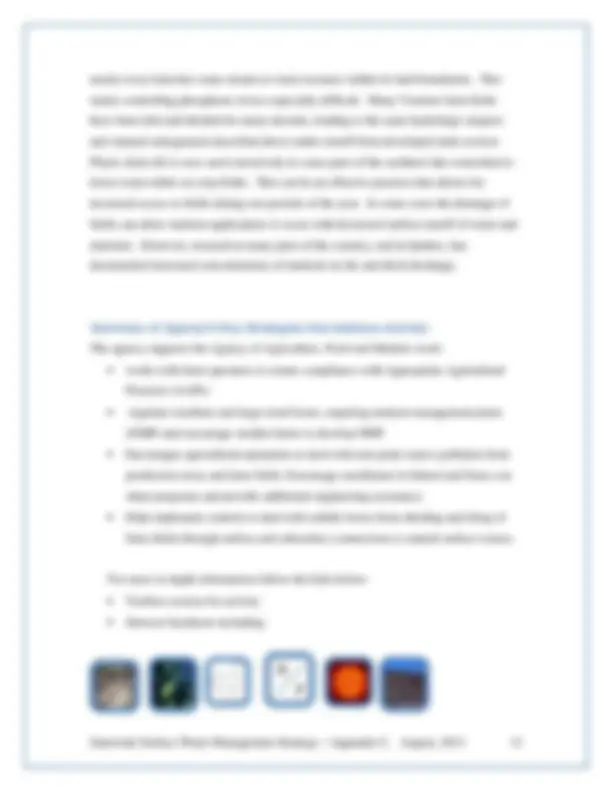
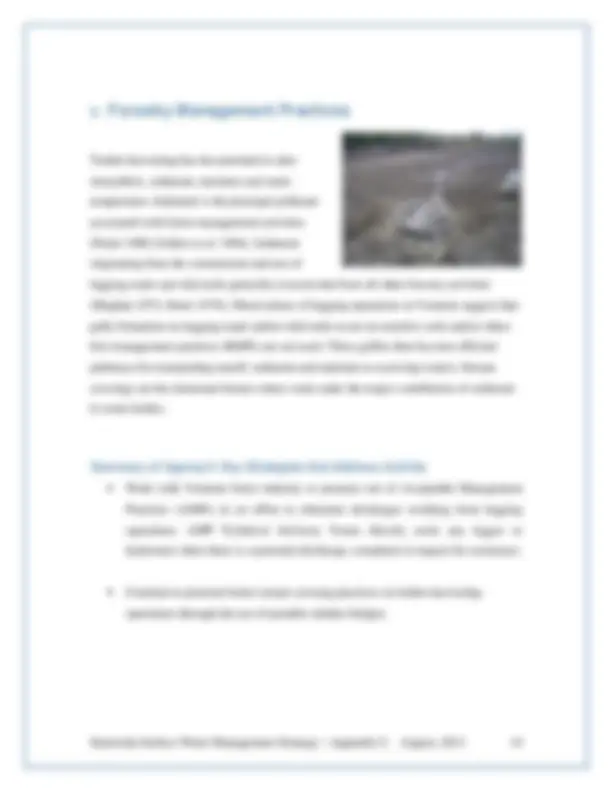
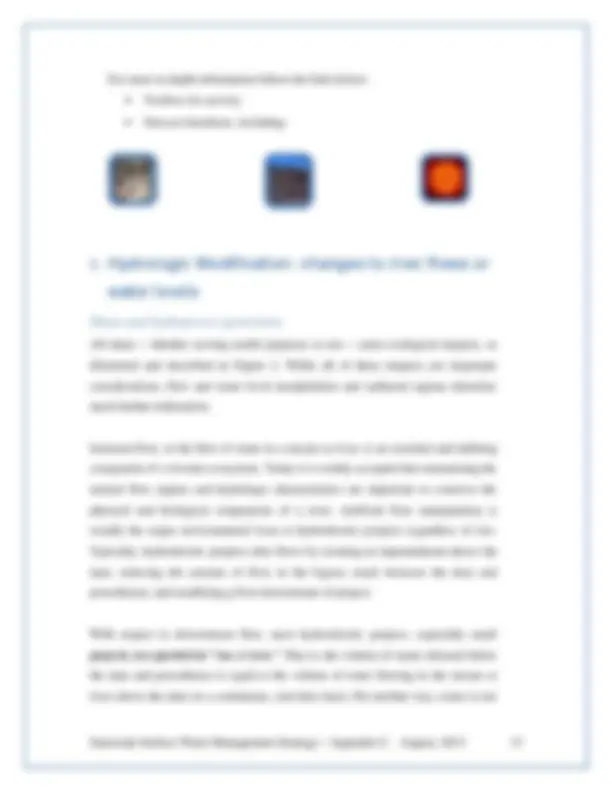
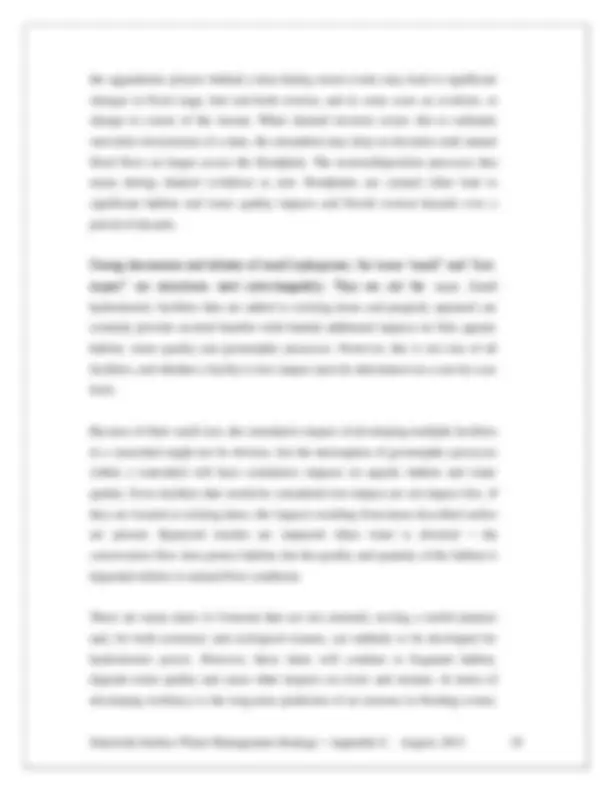
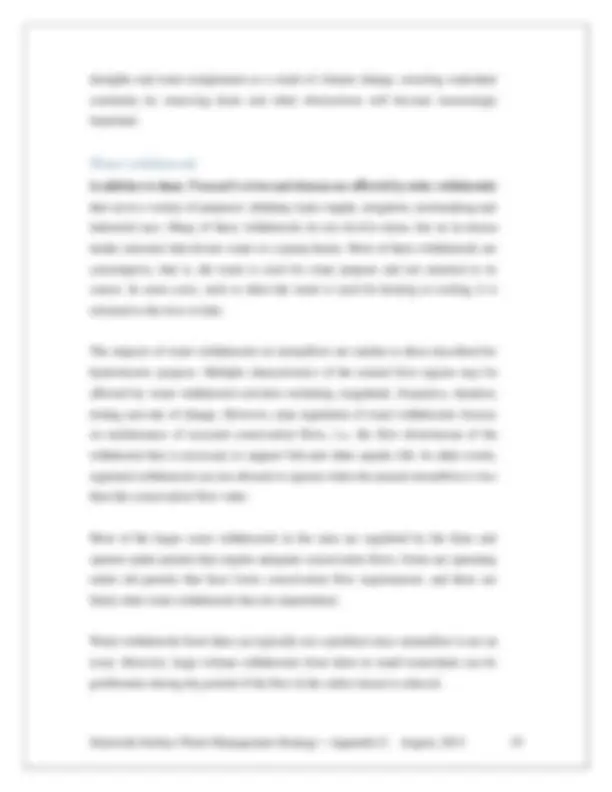


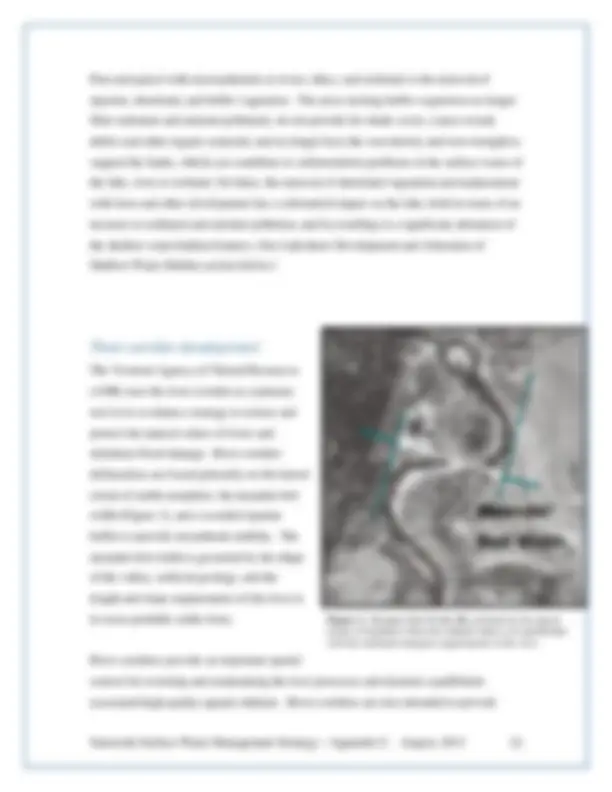
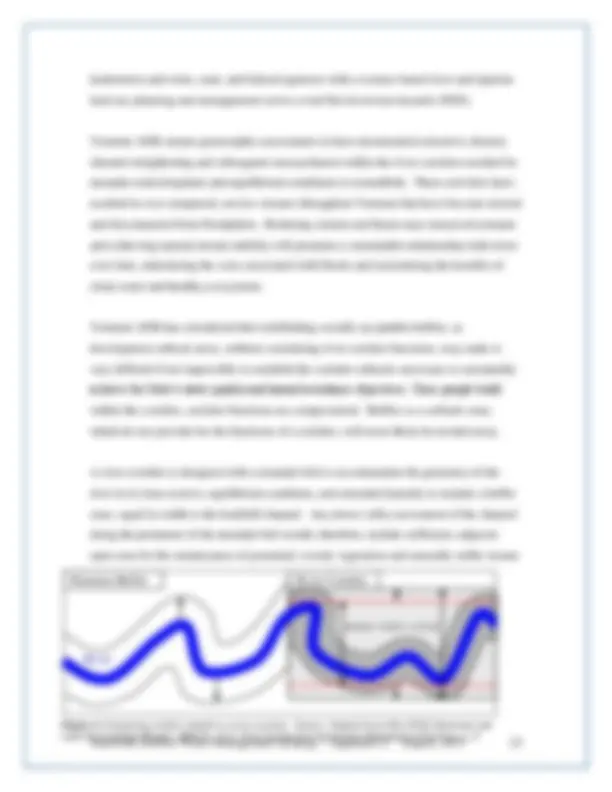
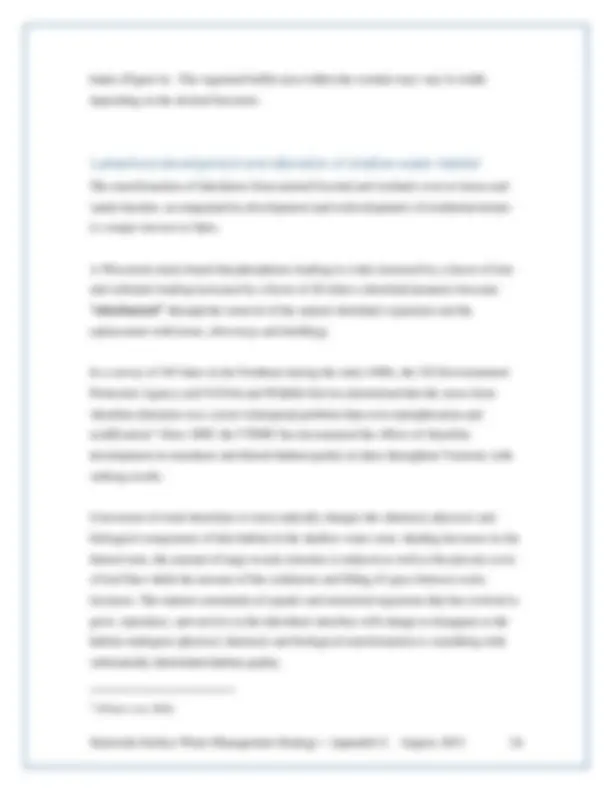
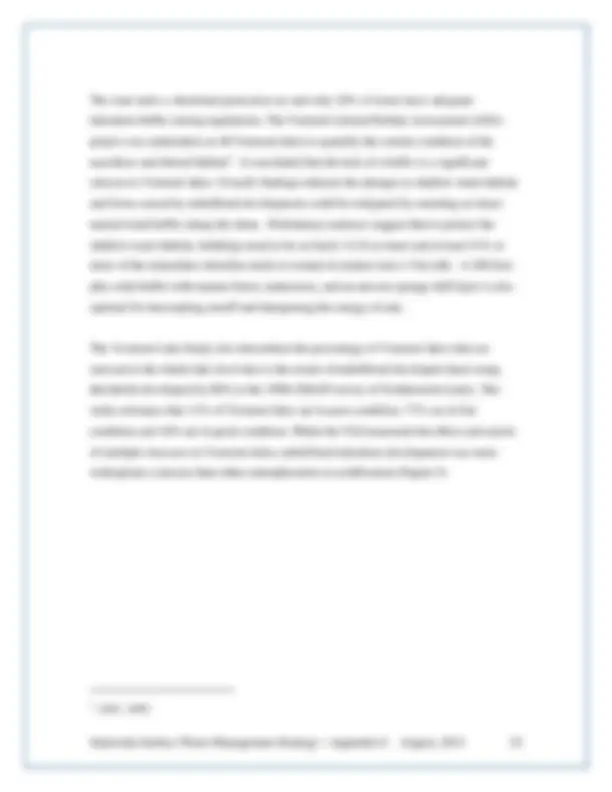
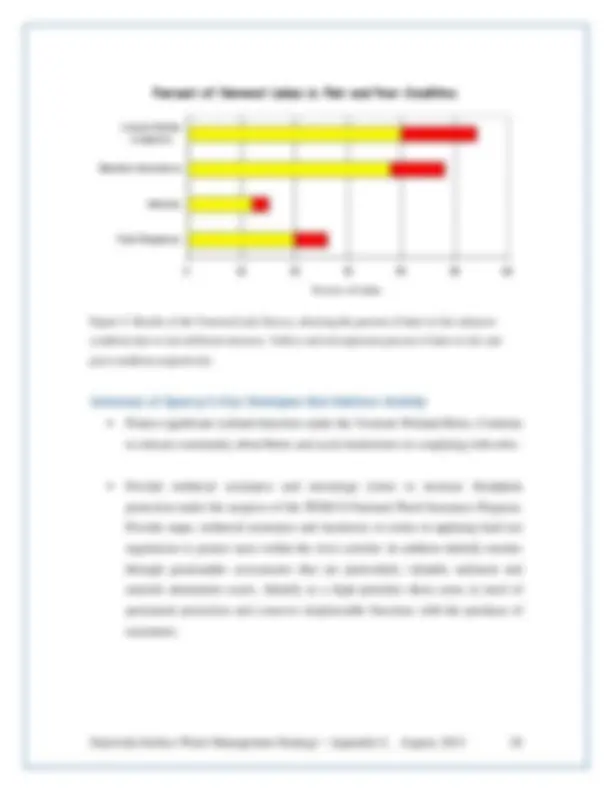

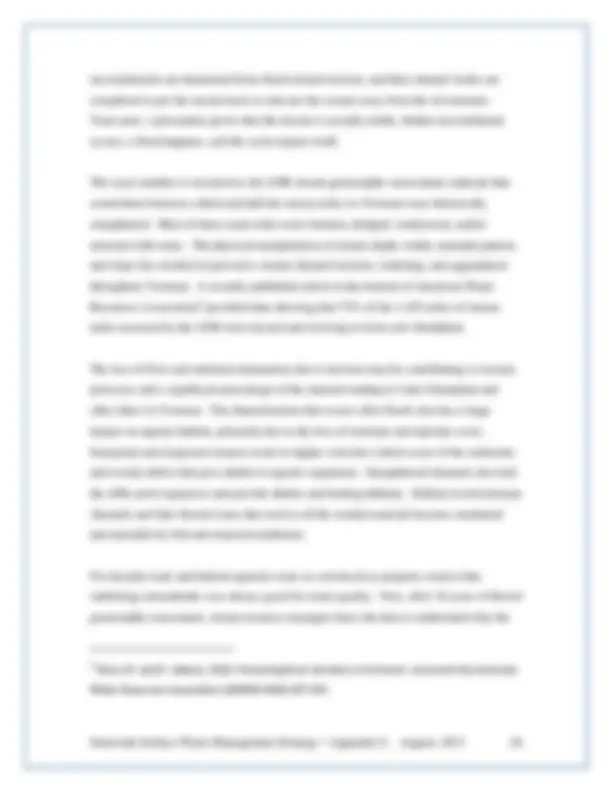
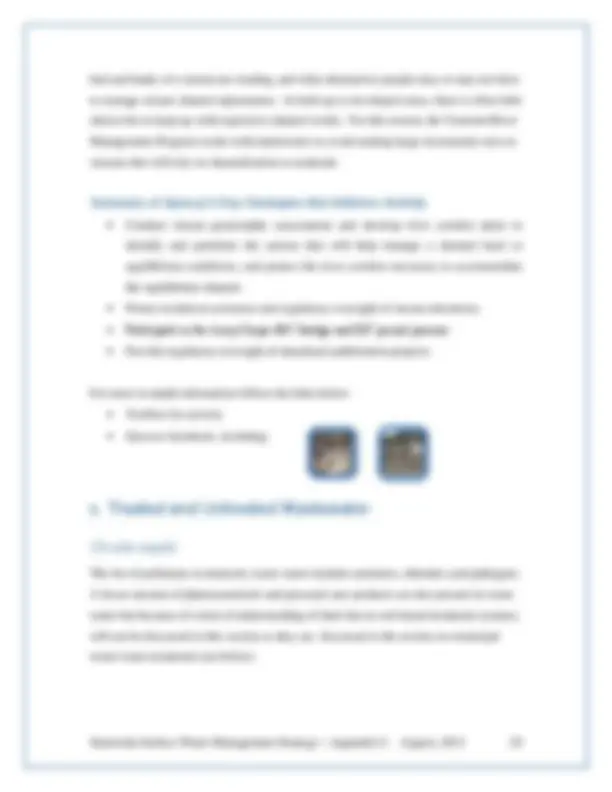
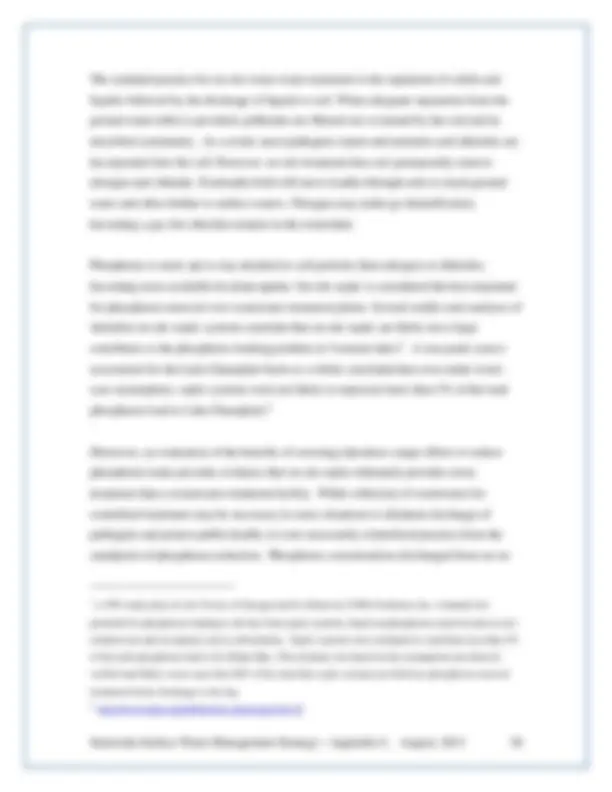
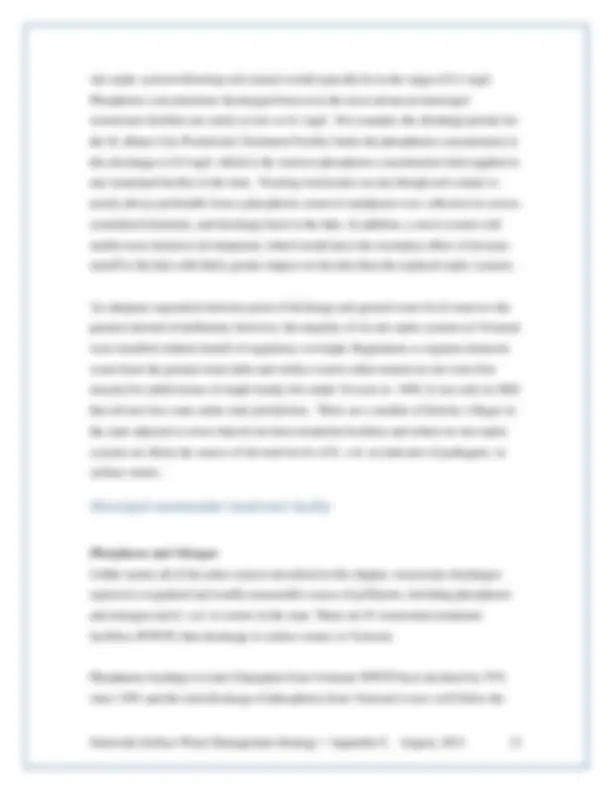

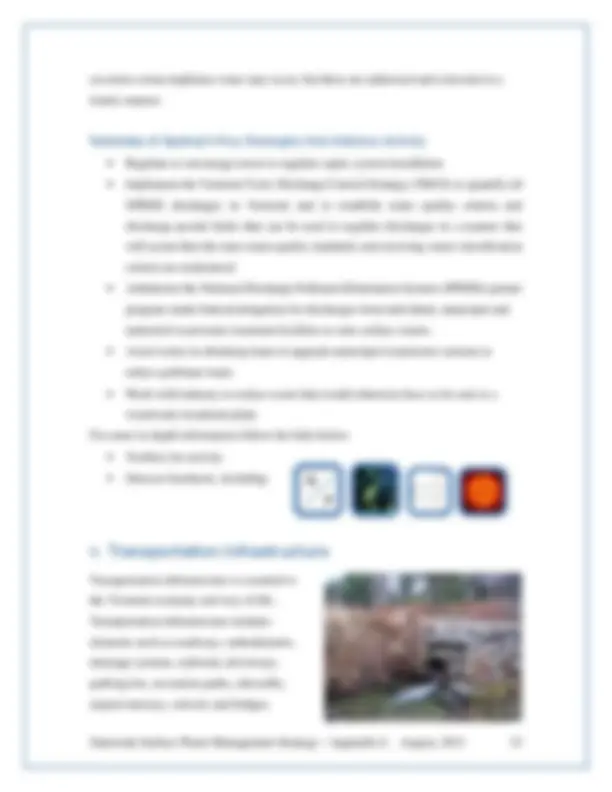
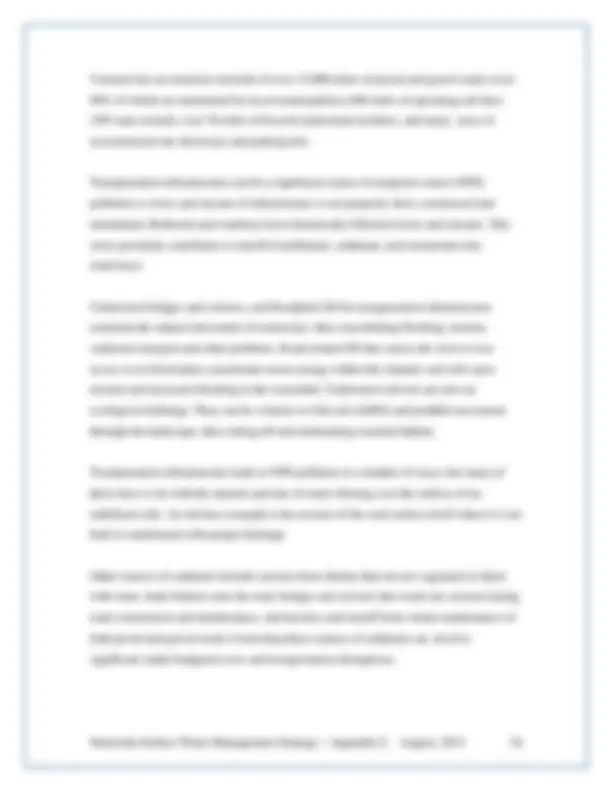
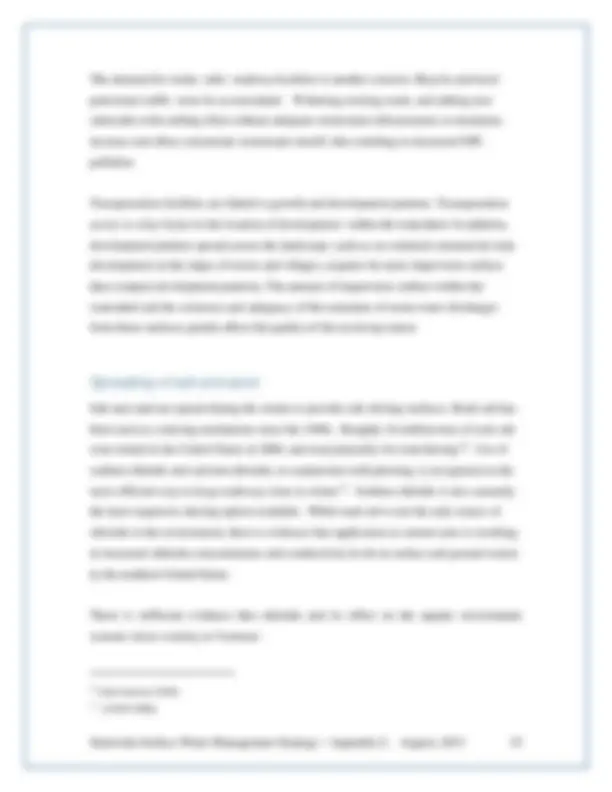
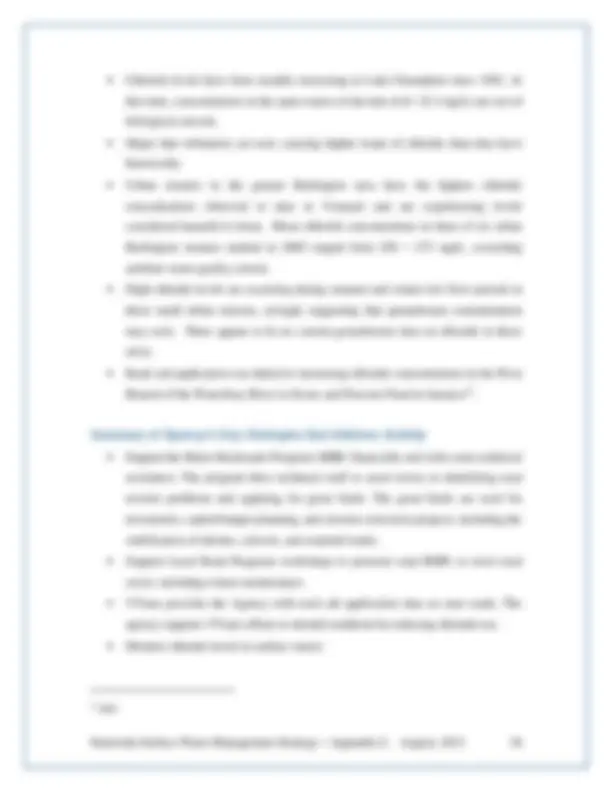

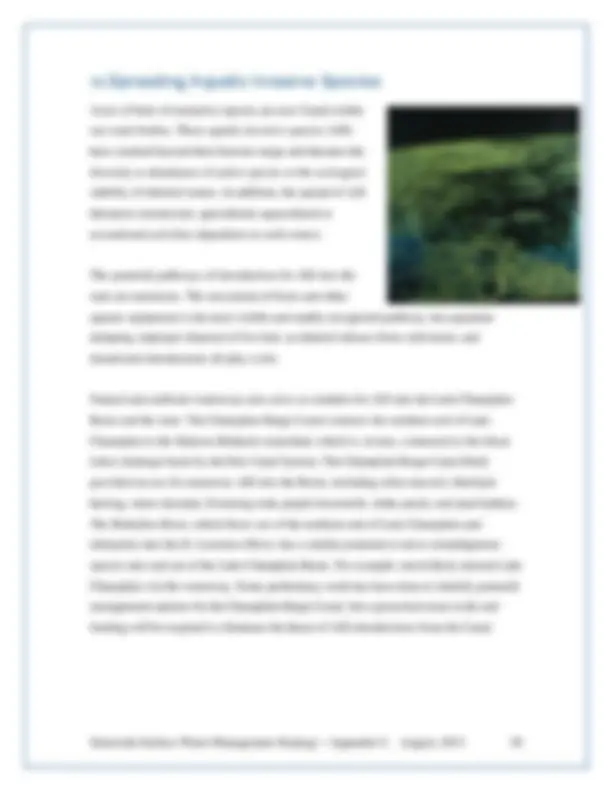
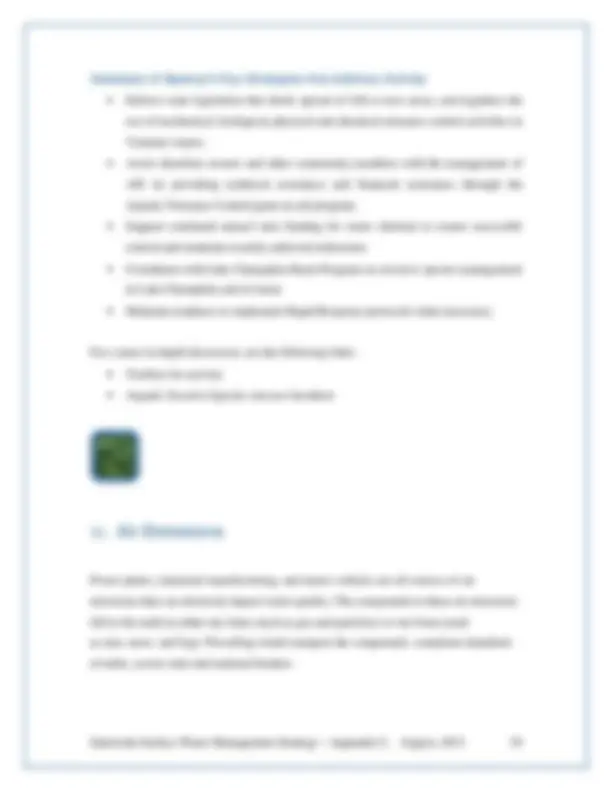

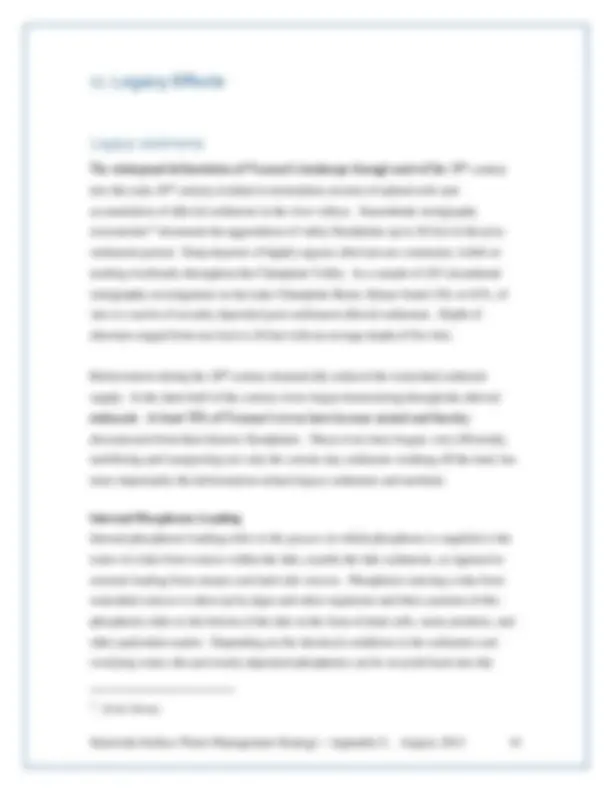
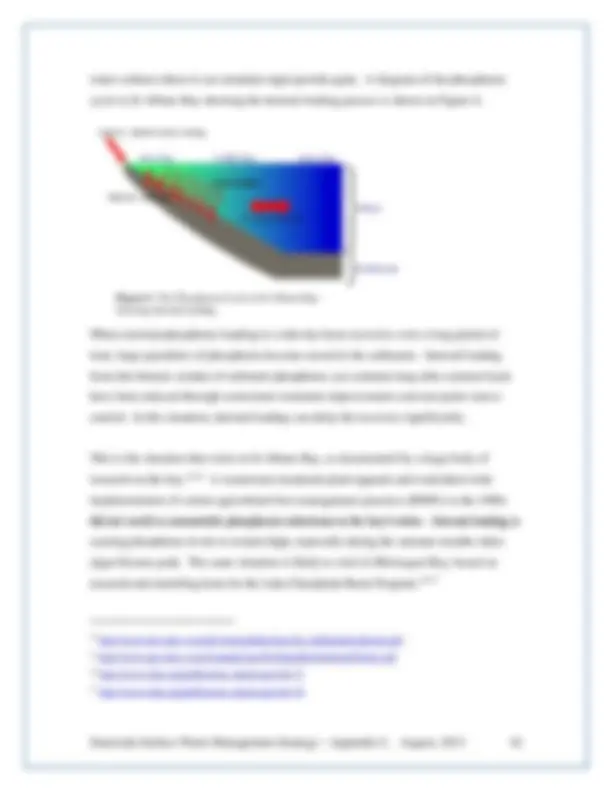
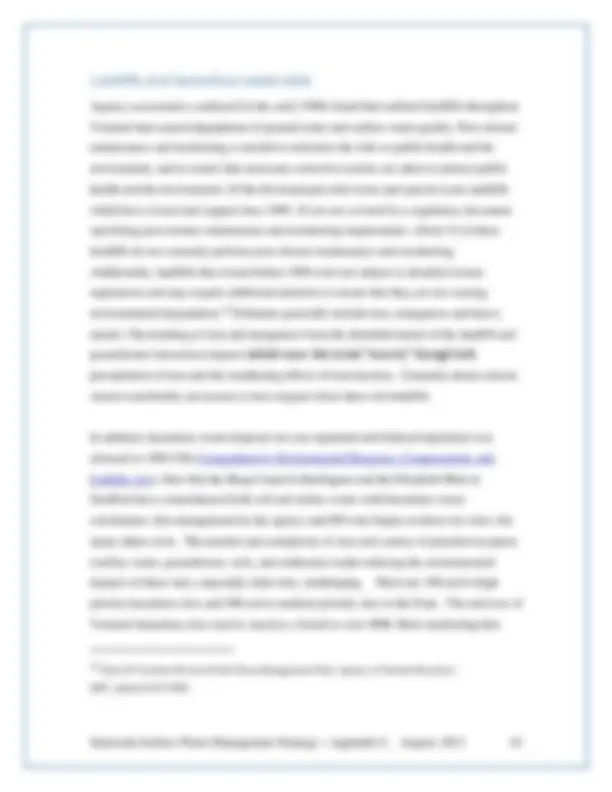
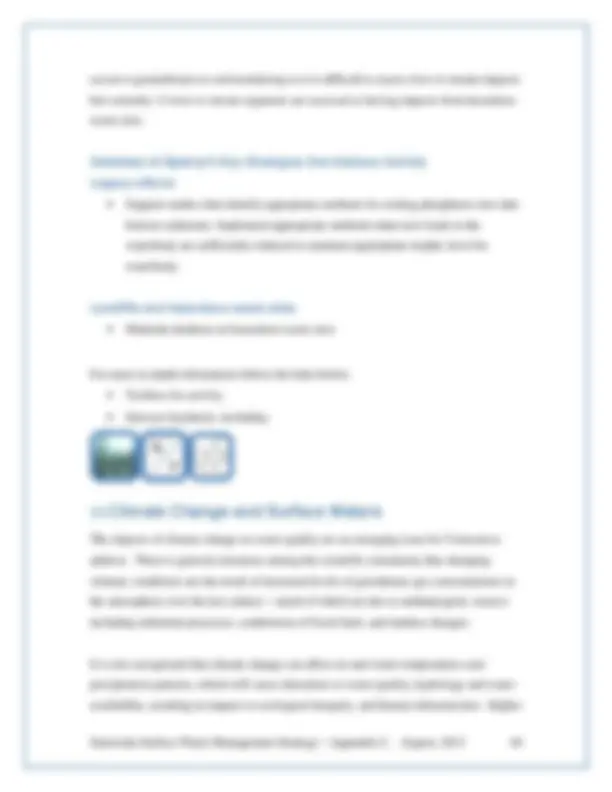
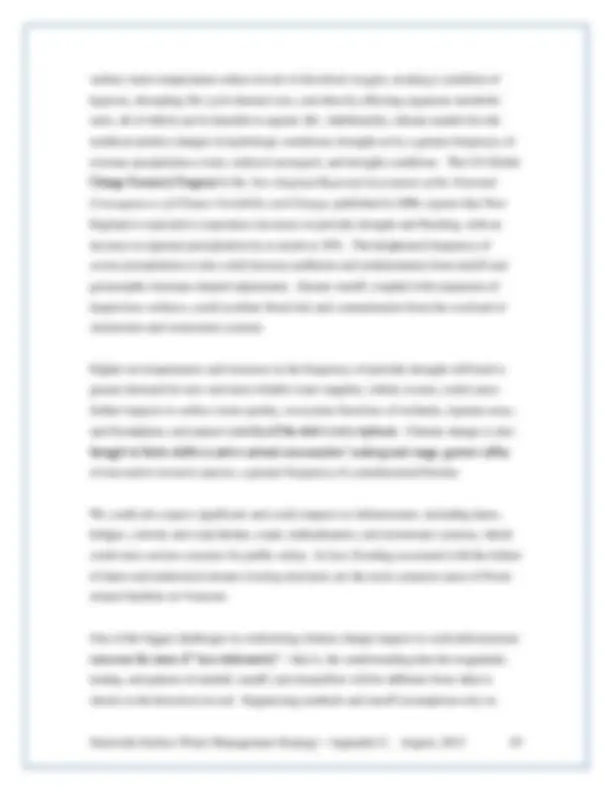
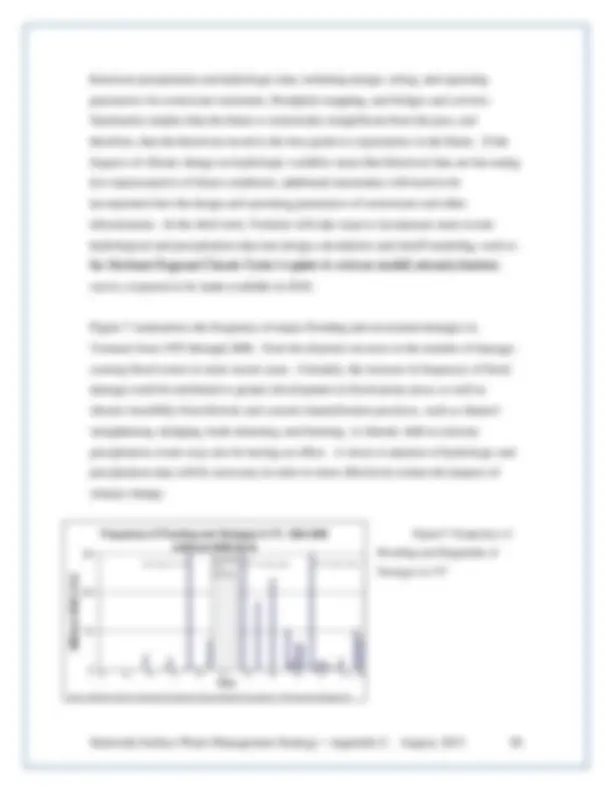



Study with the several resources on Docsity

Earn points by helping other students or get them with a premium plan


Prepare for your exams
Study with the several resources on Docsity

Earn points to download
Earn points by helping other students or get them with a premium plan
Community
Ask the community for help and clear up your study doubts
Discover the best universities in your country according to Docsity users
Free resources
Download our free guides on studying techniques, anxiety management strategies, and thesis advice from Docsity tutors
The impact of various land uses on water quality, focusing on forests, agriculture, and developed lands. Forests protect water quality by filtering pollutants and stabilizing soils, while conversion of forest land to other uses can lead to water quality impairment. Agricultural activities, particularly inadequate animal waste and nutrient management, are a major source of agricultural nonpoint source pollution. Developed lands, despite being the smallest land use in the Lake Champlain basin, contribute the most to phosphorus loads due to stormwater runoff. The document also touches upon the importance of green infrastructure practices and the role of dams and water withdrawals in water quality.
Typology: Study Guides, Projects, Research
1 / 47

This page cannot be seen from the preview
Don't miss anything!








































The health of the rivers, lakes, and wetlands can be directly related to the type of landcover and associated land use in their watersheds. Pristine waters are associated with mainly undisturbed forested watersheds. The level of impact on water quality becomes higher as land uses intensify through the spectrum of agriculture, timber harvesting, housing, industry, and roads.
Land conversion of Vermont farms and forests from 1982 to 1997 reveals an increase of 74,800 acres of land developed for building sites (Bolduc, et al., 2008). Of these, an estimated 31%, or 23,450 acres, came from agricultural land, whereas an estimated 68%, or nearly 51,000 acres, came from forest land. Estimates from the Natural Resource Conservation Service’s Natural Resource Inventory reveal that developed land in Vermont, not including land in rural transportation uses, increased from 158,900 acres in 1982 to about 254,200 acres by 2003, a significant increase of 60% over two decades.” (2010 Vermont Forest Resources Plan, Division of Forests).
Forest is the dominant land cover in Vermont with approximately 76% (4.6 million acres) of the state in forest cover. Most of Vermont’s forestland is privately owned (3.8 million acres). Forests protect water quality by slowing runoff, stabilizing soils and filtering pollutants, see Figure 1. Conversion of forest land to other uses interrupts these natural processes and increases the potential for water quality impairment.
their functions throughout the state. Riparian areas are also subject to intense development or land use pressure including such activities as agricultural, transportation, and seasonal homes.
A study completed by researchers at the University of Vermont identified developed lands as the predominant contributor of phosphorus loads in the Lake Champlain basin, despite the fact that it is not the predominant land-use in the basin as a whole.^1 On an acre for acre basis, load contributions from developed lands are consistently higher than agricultural lands. Specifically, the study estimated that on average, developed land generally contributes about four times as much phosphorus per acre as agricultural land.
The higher phosphorus export rate from developed land is significant because the same study also found an overall increase in the conversion of agricultural land to developed land in the Lake Champlain basin. A separate analysis of Natural Resource Inventory (NRI) data, by NRCS staff, strongly supports this trend in land use change. NRI data show that, statewide, developed land increased by about 31% from 1982-
(^1) “Updating the Lake Champlain Basin Land Use Data to Improve Prediction of Phosphorus Loading.” Report to Lake Champlain Basin Program. (May 31, 2007). http://www.lcbp.org/publication_detail.aspx?id= (^2) Personal Communication via email with Ray Godfrey (8/6/2007). Email was accompanied by data tables supporting this statement.
Summary of Agency’s Key Strategies that Address Activity The agency provides assistance to landowners to encourage them to maintain forested land, and protect wetlands and forested buffers including Technical assistance through the county foresters and a mix of programs for managing a productive forests for silviculture. Incentives to keep working forested lands in production and forested as well as riparian buffers and wetlands intact (Use Value Appraisal Program). Encourage restoration of wetlands through the NRCS Wetland Reserve Program Encourage landuse planning that reduces amount of land developed per unit of housing/commercial development Land acquisition Educate the public on the value of forestland, wetlands and buffers.
See also sections on Encroachment within wetland buffers, lake shorelines, and river corridors
For more in-depth information follow the links below: Toolbox section for activity Stressor factsheets including:
Stormwater runoff occurs when precipitation “runs off” impervious surfaces (rooftops, parking lots, drives ways, etc.,) rather than
the additional energy from stormwater runoff can contribute heavily to in-stream erosion. Studies suggest that Vermont streams channels will begin to erode and enlarge at watershed impervious cover values as low as 3%. Many Vermont streams are highly sensitive to hydrologic modification due to their geologic history and landscape setting.
High percentages of impervious can also reduce ground water levels due to a decrease in infiltration capacity. As a result, streams that depend on ground water to maintain a base flow during dry months can experience periods of extremely low or no flow. This can have devastating effects on aquatic habitat.
Construction sites Developed lands contribute pollutants during both the construction and post construction phases. The construction phase increases loading via several mechanisms, including:
The removal of vegetation during the construction phase, which increases the chance for erosion and mobilization of particulate-bound phosphorus during runoff events. Both runoff rates and volume have been shown to increase during the construction phase, (4) while the installation of drainage measures typical of developed areas provide quicker delivery rates. The availability of sediment to the erosive forces of stormwater runoff events and the increase of runoff itself result in the increased potential for loading of sediment-bound phosphorus to nearby surface waters. Because of the efficiency of the delivery system, 50% to 100% of the soil eroded from a construction site can be delivered to a stream. The reclamation phase of most construction projects involve amending the soil with fertilizers (sometimes without soil tests) to achieve grass growth for project closeout.
Industrial sites Certain industries, by the virtue of their business (e.g., fertilizer manufacturers, paper manufacturers), import nutrients for use in production and therefore run the risk of discharging nutrients in excess of that which might be expected from undeveloped lands. Many industries also require large areas of impervious surface for warehouses, parking lots and access roads that contribute to excess hydrology and thus increased landside and in-channel sediment production.
Certain industries that involve the processing of sand/gravel may be particularly prone to exporting sediment and the associated sediment-bound phosphorus.
Residential sites Residential areas can generate large amounts of water runoff relative to undisturbed areas. While each site itself may be a small contributor, the cumulative effect is quite large. A typical home with a roof of 1000 square feet can generate 623 gallons of run off in a 1” rainstorm. Multiply that by 100 homes and the result is 62,300 gallons. Add on driveways and outbuildings and the amount grows larger still. This amount of water entering an stream or storm drainage system already dealing with high storm flows can cause localized flooding, erosion, infrastructure damage and combined sewer overflows.
Implement stormwater BMPs through issuance of individual or general permits for construction and post-construction stormwater discharges, municipal stormwater discharges, and stormwater discharges from industrial facilities. Conducted operational site visits to determine compliance. Implement TMDL implementation plans for all twelve of the lowland (non- mountain) TMDLs for stormwater-impaired watersheds. Collaborate on illicit discharge and detection elimination studies. Promote and support green infrastructure practices that mimic natural hydrology in order to reduce the water volume and water quality impacts of the built environment. Implement the Agency of Natural Resources Green Infrastructure Plan collaboratively with other State agencies, local government, federal partners, and NGOs.
accumulates in farm soils and can be mobilized during wet weather events, as stormwater-related erosion carries both sediment-bound and soluble phosphorus into adjacent receiving waters. This has resulted in increased phosphorus losses from farms and transport to water bodies of concern including Lake Champlain. Although intense production systems were thought to be economically profitable, the external environmental costs associated with the increased phosphorus transported to Lake Champlain and other waters in the state were not considered.
There are a number of potential sources of pollutants, especially phosphorus and pathogens from production areas including barnyards, milk house waste, silage runoff, and improperly stored manure. Most animal production facilities have open outside areas where livestock are concentrated throughout the year. The runoff from these areas is often not collected or treated, and as such can contribute to increased phosphorus losses during periods of heavy rainfall. Dairy operations produce large quantities of wastewater from milk houses, which can include phosphorus from animal wastes and detergents. Most dairy farms either collect their milk house waste in their waste (manure) storage structure or use a septic system to treat the wastewater. In some cases milk house waste is not adequately collected and treated. The majority of Vermont farms have transitioned from tall upright silos to concrete walled bunker silos, which are more cost effective. Most farms cover their silage storages with plastic and tires, concentrated silage leachate and runoff from the bunker silos is typically not collected or stored. Manure is sometimes stacked in areas that are unsuitable and susceptible to runoff. Waste storage structures may be inadequately sized resulting in overflows of manure and/or the need to spread during winter months.
As farms began complying with the winter manure spreading ban that was part of the original Vermont Accepted Agricultural Practices (AAPs), the manure had to be stored for longer periods of time. Liquid manure storage structures or earthen pits were the most
common systems employed on Vermont farms. The vast majority of the manure storage structures remain unprotected from precipitation which increases storage capacity requirements and results in the generation of greater volumes of wastes for land application. Due of the cost of hauling the heavier liquid wastes, farmers have been reluctant to haul it to more distant fields. As a result, soil phosphorus levels on many fields, especially those closest to the production area, eventually became elevated beyond optimum crop production levels. Because of soil phosphorus/phosphorus runoff relationships, elevated soil phosphorus levels result in proportionately higher concentrations of phosphorus in runoff, meaning more phosphorus transported to the lake, in areas with elevated soil phosphorus concentrations.
In the early 1800’s the majority of Vermont was cleared and used as pastureland for sheep, resulting in a great deal of erosion off very steep slopes. Major conservation efforts helped to reforest the hillsides when they were abandoned as the agricultural industry became more mechanized and the market for wool declined. Many farms transitioned from sheep to dairy operations. Early dairy farms were small pasture-based operations, which were eventually replaced by larger confinement operations. The non- milking animals typically still remain on pasture for the summer months, often with poor pasture management because these animals require less daily attention. These areas are often severely overgrazed with uncontrolled access to surface water. These areas are particularly susceptible to higher erosion and increased phosphorus runoff.
There is currently a movement in Vermont back to pasture-based farms. As farms transition to a pasture-based system, however, there is a need for improved pasture management. It is important to balance forage requirements with the land base using a planned grazing strategy to avoid the potential for erosion from over-grazing. Additionally, offsite watering facilities and controlled animal access to streams are necessary to maintain streambank stability and prevent streambank erosion, direct deposition of animal wastes, and loss of riparian buffer capacity. If managed properly,
nearly every farm has some stream or water resource within its land boundaries. This makes controlling phosphorus losses especially difficult. Many Vermont farm fields have been tiled and ditched for many decades, leading to the same hydrologic impacts and channel enlargement described above under runoff from developed lands section Plastic drain tile is now used extensively in some parts of the northern lake watershed to lower water tables on crop fields. This can be an effective practice that allows for increased access to fields during wet periods of the year. In some cases the drainage of fields can allow nutrient applications to occur with decreased surface runoff of water and nutrients. However, research in many parts of the country, and in Quebec, has documented increased concentrations of nutrients in tile and ditch discharge.
Summary of Agency’s Key Strategies that Address Activity: The agency supports the Agency of Agriculture, Food and Markets work: works with farm operators to ensure compliance with Appropriate Agricultural Practices (AAPs) regulates medium and large sized farms, requiring nutrient management plans (NMP) and encourage smaller farms to develop NMP Encourages agricultural operations to deal with non-point source pollution from production areas and farm fields. Encourage enrollment in federal and State cost share programs and provide additional engineering assistance. Help implement controls to deal with soluble losses from ditching and tiling of farm fields through surface and subsurface connections to natural surface waters.
For more in-depth information follow the links below: Toolbox section for activity Stressor factsheets including:
Timber harvesting has the potential to alter streamflow, sediment, nutrients and water temperature. Sediment is the principal pollutant associated with forest management activities (Pardo 1980; Golden et al. 1984). Sediment originating from the construction and use of logging roads and skid trails generally exceeds that from all other forestry activities (Meghan 1972; Patric 1976). Observations of logging operations in Vermont suggest that gully formation on logging roads and/or skid trails occur on sensitive soils and/or when best management practices (BMPs) are not used. These gullies then become efficient pathways for transporting runoff, sediment and nutrients to receiving waters. Stream crossings are the dominant feature where roads make the major contribution of sediment to water bodies.
Summary of Agency’s Key Strategies that Address Activity Work with Vermont forest industry to promote use of Acceptable Management Practices (AMPs) in an effort to eliminate discharges resulting from logging operations. AMP Technical Advisory Teams directly assist any logger or landowner when there is a potential discharge, complaint or request for assistance.
Continue to promote better stream crossing practices on timber harvesting operations through the use of portable skidder bridges.
stored in the impoundment to be released at a later time. For these projects, flows in the bypass reach are usually the only flow-related concern, as downstream flow manipulation is not an issue as long as the project is properly maintained and operated. In addition to run-of-river projects, there are projects that operate in “peaking” mode, where water is stored in the impoundment and released to generate power when the demand for electricity is high. These projects alter downstream flows, potentially resulting in impacts to aquatic organisms and their habitat, by modifying the physical and chemical conditions (i.e. dissolved oxygen and water temperature). In addition, the impoundment elevations at peaking projects tend to fluctuate, resulting in upstream impacts to aquatic habitat and wetlands. The third issue with peaking projects is again the amount of flow that remains in the bypass.
Dams and diversion structures that change the depth and slope of a stream significantly alter the size and quantity of bed sediments and how they are moved, sorted, and distributed along both the cross-section and profile of the channel.^3 In a natural system, a river’s bed sediments (substrate) and eroded riverbank materials are transported downstream during high-flow periods. Due to stream equilibrium process, however, the material that is lost from a reach of river is normally replaced, as flows recede, through deposition of material transported from upstream reaches. When the transport of sediments, e.g., gravels and cobbles, is interrupted in an impoundment, the channel may become vertically unstable. The instability takes two forms. The impoundment becomes a sediment “sink” as the sediments from upstream hit the flattened river reach and are deposited, resulting in aggradation , or raising of the natural riverbed. The downstream instability is essentially the opposite effect. The river channel becomes incised , or downcuts, as the materials naturally eroded from the streambed during a flood event below a dam are no longer being replaced by an equivalent amount of sediment from upstream. This mode of
(^3) MacBroom, James G. The River Book. Hartford, CT: Connecticut Department of Environmental Protection; 1998.
sediment regime alteration (i.e., sediment discontinuity) has been observed above and below dams, diversions, and undersized culverts throughout Vermont and has a profound effect on stream stability and aquatic habitat.
Figure 2 Effects of a dam on a free-flowing river (Graphic courtesy of American Rivers)
Materials aggraded in the slower and deeper water behind the dam alter habitat structure, typically by finer sediments covering or embedding the larger substrates that provide cover for aquatic organisms. In watersheds with high sediment loads,
droughts and water temperature as a result of climate change, restoring watershed continuity by removing dams and other obstructions will become increasingly important.
In addition to dams, Vermont’s rivers and streams are affected by water withdrawals that serve a variety of purposes: drinking water supply, irrigation, snowmaking and industrial uses. Many of these withdrawals do not involve dams, but an in-stream intake structure that diverts water to a pump house. Most of these withdrawals are consumptive, that is, the water is used for some purpose and not returned to its source. In some cases, such as when the water is used for heating or cooling, it is returned to the river or lake.
The impacts of water withdrawals on streamflow are similar to those described for hydroelectric projects. Multiple characteristics of the natural flow regime may be affected by water withdrawal activities including, magnitude, frequency, duration, timing and rate of change. However, state regulation of water withdrawals focuses on maintenance of seasonal conservation flows, i.e., the flow downstream of the withdrawal that is necessary to support fish and other aquatic life. In other words, regulated withdrawals are not allowed to operate when the natural streamflow is less than the conservation flow value.
Most of the larger water withdrawals in the state are regulated by the State and operate under permits that require adequate conservation flows. Some are operating under old permits that have lower conservation flow requirements, and there are likely other water withdrawals that are unpermitted.
Water withdrawals from lakes are typically not a problem since streamflow is not an issue. However, large volume withdrawals from lakes in small watersheds can be problematic during dry periods if the flow in the outlet stream is reduced.
Many of Vermont’s lakes have dams at their outlets that have varying capabilities to manipulate the water level. The management and regulatory oversight of these is also variable – the Vermont Agency of Natural Resources (ANR) does not have jurisdiction over all situations. Some Vermont lakes are lowered in the fall for the winter period by local residents for the purpose of protection of shoreline structures. Depending on the timing and extent of a winter drawdown, there can be negative impacts on aquatic habitat and biota.
Summary of Agency’s Key Strategies that Address Activity Issuance of Section 401 Water Quality Certifications for hydroelectric projects and water withdrawals Participation in the federal hydroelectric project relicensing process Vermont Dam Task Force created to identify opportunities for dam removals where dam owners are willing and funding is available. Seek to reduce or eliminate artificial lake level fluctuation and winter drawdowns
For more in-depth information follow the links below: Toolbox for activity Stressor factsheets, including: